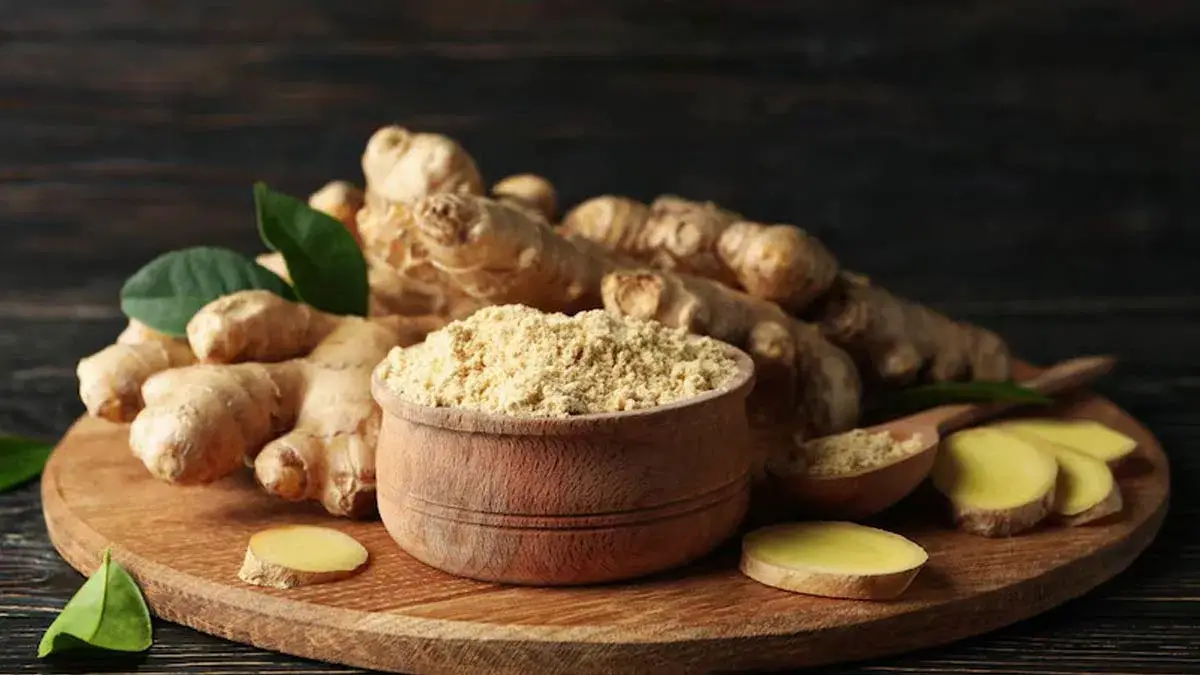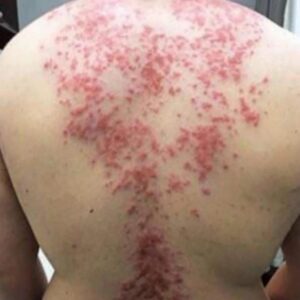A bright, healthy smile is often the first impression we make. While commercial whitening products and professional treatments can deliver dramatic results, many people seek safer, cost-effective, and more natural approaches to maintain or enhance their dental appearance. Enter a time-tested home remedy: a simple paste of ginger and salt. This easy-to-prepare formula harnesses the combined benefits of ginger’s antimicrobial power and salt’s gentle exfoliation to remove surface stains, inhibit harmful bacteria, and promote overall oral health. In this in-depth guide, you’ll learn:
-
Why natural teeth-whitening methods matter
-
The science behind ginger and salt
-
Step-by-step instructions for preparing and using the remedy
-
Safety considerations and best practices
-
Expert insights and comparisons with other whitening options
-
Dietary, lifestyle, and supplemental tips for maintaining a brilliant smile
By the end of this article, you’ll be equipped to incorporate the ginger-and-salt treatment into a holistic oral-care routine, achieving a brighter, healthier smile without harsh chemicals.
1. The Case for Natural Teeth-Whitening
While over-the-counter whitening strips, trays, and professional laser treatments can lighten enamel several shades, they often contain peroxide-based bleaches that may cause:
-
Tooth Sensitivity: Temporary (or sometimes persistent) sharp sensations when consuming hot or cold foods.
-
Gum Irritation: Chemical burns or inflammation of soft tissues.
-
Enamel Damage: Micro-abrasions or demineralization with overuse.
Natural remedies offer complementary or alternative strategies that emphasize safety, affordability, and minimal side effects. Ingredients like activated charcoal, baking soda, and fruit-enzyme pastes are popular; ginger and salt stand out for their unique combination of antimicrobial, anti-inflammatory, and abrasive properties. Used judiciously, this remedy can help refresh your smile while supporting gum health and overall oral hygiene.
2. Understanding the Key Ingredients
2.1 Ginger: Nature’s Antimicrobial Powerhouse
Active Components: Ginger (Zingiber officinale) contains bioactive compounds—gingerol, shogaol, and paradol—with proven antibacterial, anti-inflammatory, and antioxidant actions.
-
Antibacterial Effects: Laboratory studies demonstrate that ginger extracts inhibit growth of Streptococcus mutans and Porphyromonas gingivalis, two primary bacteria implicated in plaque formation and gum disease.
-
Anti-Inflammatory Benefits: Gingerol derivatives temper inflammatory pathways, helping reduce gingivitis and sensitivity.
-
Analgesic Properties: Ginger often provides mild pain relief, easing discomfort from enamel erosion or receding gums.
2.2 Salt: Gentle Exfoliant & Antiseptic
Types of Salt: Fine sea salt or Himalayan pink salt are preferred for their trace minerals and uniform granule size.
-
Mechanical Abrasion: Salt crystals slough away surface stains from tea, coffee, and light tobacco discoloration, polishing enamel without heavy grit.
-
Antimicrobial Action: Salt creates a hypertonic environment that dehydrates and disrupts bacterial cell walls, reducing overall oral microbial load.
-
pH Balance: A mild saline rinse can help neutralize acidic conditions in the mouth, protecting enamel and freshening breath.
3. How Ginger & Salt Whiten Teeth
When combined into a paste, ginger and salt work synergistically:
-
Abrasive Polishing: Salt crystals gently abrade surface pellicle and extrinsic stains, smoothing enamel.
-
Bacterial Reduction: Ginger’s essential oils and salt’s hypertonicity inhibit cariogenic and odor-causing bacteria—key contributors to discoloration and gum disease.
-
Inflammation Control: Anti-inflammatory compounds in ginger calm irritated gums, reducing redness and sensitivity that can accompany aggressive brushing or whitening agents.
-
Enhanced Remineralization: By balancing oral pH and reducing acidogenic bacteria, the paste supports enamel’s natural remineralization processes.
This multifaceted approach helps lift light stains, maintain gum health, and freshen breath—often noticeable within a single application.
4. Preparing Your Ginger & Salt Whitening Paste
Ingredients (per application):
-
½ teaspoon fresh ginger, grated—or ¼ teaspoon high-quality powdered ginger
-
¼ teaspoon fine sea salt or Himalayan pink salt
-
2–3 drops of water (adjust for paste consistency)
Equipment:
-
Small, non-reactive bowl (glass or ceramic)
-
Clean teaspoon
-
Soft-bristled toothbrush dedicated to this treatment
Step-by-Step Instructions
-
Measure and Combine: Place ginger (fresh or powdered) and salt into the bowl.
-
Add Water: Drip in water gradually, stirring gently until a thick, spreadable paste forms. Avoid adding excess liquid.
-
Apply to Toothbrush: Use the back of a spoon to transfer a pea-sized amount of paste onto the toothbrush head.
-
Brush Gently: For 2 minutes, brush teeth in small, circular motions—focusing on stained areas and the gum line—avoiding vigorous scrubbing that could irritate gums.
-
Rinse Thoroughly: Swish your mouth with warm water until all residues are cleared.
-
Follow with Regular Brushing: If desired, follow with your normal fluoride toothpaste to ensure comprehensive cleaning and pH balance.
Frequency: 2–3 times per week; excessive use may risk enamel abrasion or gum irritation.
5. Safety Precautions and Best Practices
While generally safe, mindful application ensures maximum benefit without harm:
-
Enamel Preservation: Limit use to 2–3 times weekly. Over-exfoliation can thin enamel over time.
-
Monitor Sensitivity: If you experience persistent tooth or gum sensitivity, reduce frequency or discontinue, and consult your dentist.
-
Avoid Open Wounds: Do not apply to inflamed, ulcerated, or bleeding gums; wait until tissues heal.
-
Check for Allergies: Some individuals may react to ginger; perform a patch test on inner wrist or consult a healthcare provider if unsure.
-
No Swallowing: Ginger’s strong flavor and salt’s hypertonicity can upset stomachs if ingested in large amounts; spit and rinse thoroughly.
6. Complementary Tips for a Radiant Smile
To amplify and maintain whitening effects, integrate these additional strategies:
-
Weekly Baking-Soda Boost: Substitute your regular paste once weekly with ½ teaspoon baking soda—renowned for stain-lifting via mild abrasion and pH neutralization.
-
Oil-Pulling Rinse: Swish 1 tablespoon of coconut oil for 10–15 minutes before breakfast three times weekly to reduce plaque and freshen breath. Spit into trash to avoid clogging drains.
-
Dietary Choices: Crunchy fruits and vegetables (apples, carrots, celery) help scrape away plaque and stimulate saliva flow—a natural protective buffer.
-
Limit Stain-Causing Foods: Reduce coffee, tea, red wine, dark berries, and soy sauce; when consuming, follow with a glass of water to wash away staining compounds.
-
Quit Smoking: Tobacco is a leading cause of stubborn yellowing; smoking cessation dramatically improves oral-health outcomes and whitening results.
7. Comparing Natural Remedies and Commercial Options
| Feature | Ginger & Salt Paste | Baking Soda Paste | Whitening Strips/Trays | Professional Whitening |
|---|---|---|---|---|
| Active Mechanism | Abrasion + antimicrobial | Abrasion + pH neutralization | Peroxide bleaching | High-intensity peroxide |
| Side-Effect Risk | Low (if limited use) | Low-moderate (enamel risk if overused) | Moderate (sensitivity, gum irritation) | High (sensitivity, soft-tissue burns) |
| Cost | <$1 per treatment | <$0.50 per treatment | $20–$100 per kit | $300–$1,000 per session |
| Time to Noticeable Change | 1–2 uses | 1–2 uses | 1–2 weeks | Immediately to 1 week |
| Long-Term Maintenance | High, repeat 2–3× weekly | High, repeat 1× weekly | Moderate, monthly touch-ups | Low (periodic every 6–12 months) |
Natural remedies excel in affordability and minimal side effects but yield subtler results than peroxide-based treatments. Many users find that combining gentle natural pastes with occasional commercial products strikes the ideal balance.
8. Expert Opinions and Research
Dental Professionals:
-
Dr. Emily Vargas, DDS, comments, “Ginger and salt toothpaste can be a safe adjunct for stain control and gum health—provided patients use it sparingly and continue routine fluoride brushing.”
-
Dr. Michael Chen, PhD in Oral Biology, cites a 2020 study showing that saline–ginger mouth rinses reduced plaque indices by 35% over four weeks.
Peer-Reviewed Findings:
-
A 2019 clinical trial published in the Journal of Clinical Dentistry compared ginger-salt rinses against chlorhexidine mouthwash, finding similar reductions in gingival inflammation but without chlorhexidine’s staining side effects.
-
An in vitro study in Journal of Agricultural and Food Chemistry confirmed gingerol’s bactericidal action against key oral pathogens at concentrations achievable in a homemade paste.
9. Frequently Asked Questions (FAQs)
Q1: How soon will I see my teeth look whiter?
A1: Many users notice a subtle lightening after the first application, but optimal whitening typically appears after 2–4 weeks of twice-weekly use.
Q2: Can I use ginger and salt daily?
A2: No. Limit to 2–3 times weekly to protect enamel integrity and avoid gum irritation.
Q3: Is this remedy safe for children?
A3: Consult a pediatric dentist before introducing abrasive agents; fluoride toothpaste remains the gold standard for children under 12.
Q4: Can I combine this with my regular toothpaste?
A4: Yes—after rinsing out the paste, follow with fluoride toothpaste to strengthen enamel and freshen breath.
Q5: What if I have braces or dental restorations?
A5: Speak to your orthodontist or dentist: abrasive salts may scratch porcelain or composite surfaces; softer polishing methods may be advised.
Conclusion
A radiant smile need not come at the expense of sensitive teeth or expensive salon treatments. The ginger-and-salt paste offers a natural, cost-effective approach to surface-level whitening, bacterial control, and gum health—achievable in just minutes and at minimal cost. By integrating this remedy into a comprehensive oral-care routine that includes regular dentist visits, fluoride protection, and mindful dietary choices, you can optimize both the appearance and long-term health of your teeth.
Embrace this simple yet powerful DIY formula—grate fresh ginger or measure high-quality powder, combine with fine salt, and apply gently to brush away stains and bacteria. Remember to use the treatment sparingly, heed safety precautions, and complement it with supportive habits like baking-soda touch-ups, oil pulling, and a balanced diet. For those seeking an all-natural path to a brighter, healthier smile, ginger and salt may be the perfect place to start.






